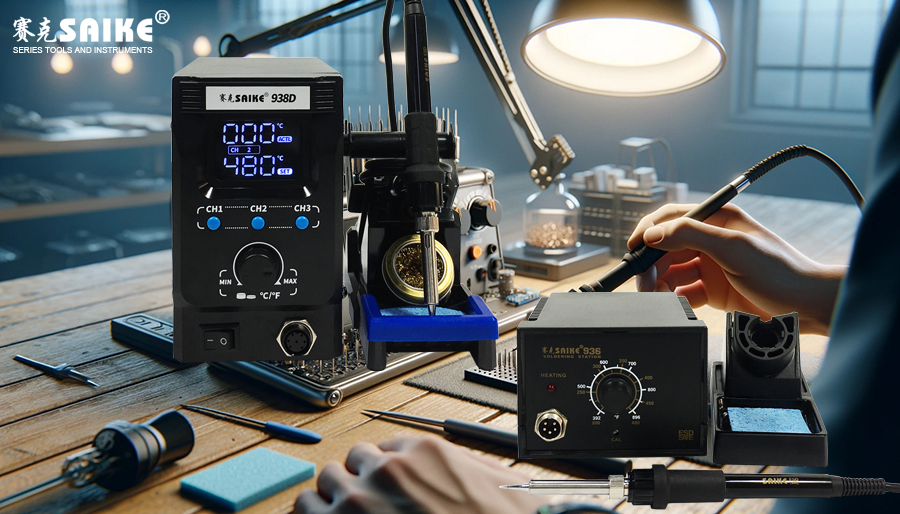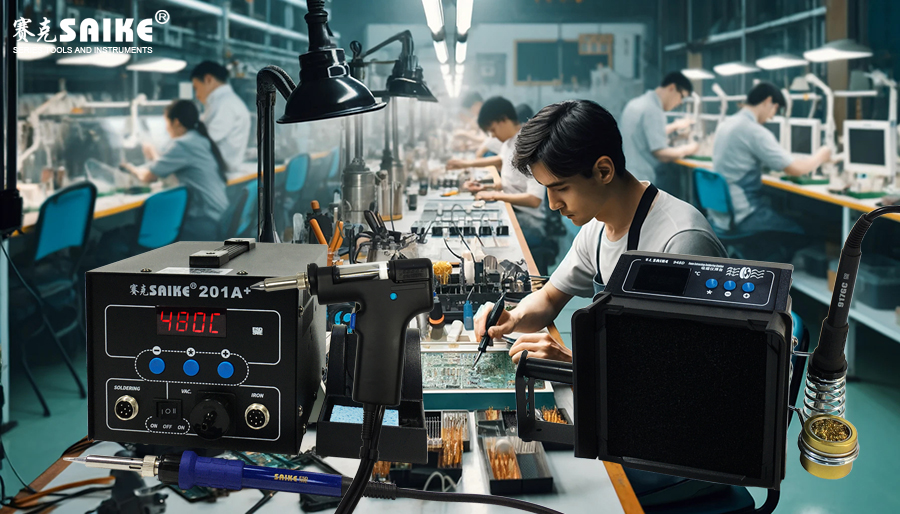
SK-YJ000HT-KP 100023
Precise control of soldering temperature is one of the key factors in ensuring soldering quality and efficiency. When soldering electronic components using a soldering station, appropriate temperature settings can significantly affect the mechanical strength, electrical performance, and overall reliability of the soldered joints. This article will introduce techniques for controlling soldering temperature on a soldering station to help operators optimize the soldering process.
I. The Importance of Soldering Temperature
Soldering temperature has multiple effects on the soldering process:
1.Melting of solder: Different solders have different melting points, and the appropriate temperature ensures that the solder melts completely, forming good solder joints.
2.Component protection: Excessively high temperatures can damage sensitive electronic components, such as semiconductors and other delicate circuit elements.
3.Solder joint quality: The right temperature facilitates good wetting of the target surface by the solder, avoiding cold soldering or brittle solder joints.
II. Temperature Control Techniques
1.Determining the appropriate soldering temperature
– Melting point of solder: First, it is necessary to know the melting point of the solder being used and set the soldering station temperature 20°C to 30°C above the melting point. For example, the commonly used lead-free solder SnAgCu has a melting point of approximately 217°C, so it is recommended to set the temperature between 240°C and 250°C.
– Component sensitivity: When soldering sensitive electronic components, use the lowest temperature possible close to the melting point to minimize thermal damage.
2.Using temperature calibration tools
– Calibration equipment: Regularly check the actual tip temperature using a soldering iron thermometer or infrared thermometer to ensure that the displayed temperature on the soldering station matches the actual temperature.
– Calibration frequency: Depending on the frequency of soldering work, calibration should be performed at least once a month or before starting a new important soldering project.
3.Considering the influence of the soldering iron tip
– Tip size and shape: Larger tips retain heat better and are suitable for larger solder joints, while smaller tips heat up quickly and are suitable for precision work. Choose the appropriate tip to provide sufficient heat without overheating.
– Tip maintenance: Keep the tip clean to avoid oxidation and contaminants that can affect heat transfer.
4.Adjusting soldering speed and technique
– Soldering speed: The appropriate soldering speed can affect the thermal cycle of the solder joint. Too fast may result in inadequate soldering, while too slow may cause overheating.
– Soldering technique: Learn proper soldering techniques, such as how to move the soldering iron together with the solder during soldering to ensure even solder distribution and adequate wetting of the solder joint.
III. Temperature Adjustment Function of the Soldering Station
Modern soldering stations are usually equipped with digital or analog temperature regulators, allowing operators to accurately set the temperature according to specific needs. Using these advanced features can:
– Preset temperature modes: Preset multiple temperature settings for different soldering tasks to facilitate quick switching.
– Temperature lock: Avoid accidentally changing settings during the soldering process.
IV. Conclusion
Mastering the techniques for controlling soldering temperature on a soldering station is crucial for improving soldering quality and operational efficiency. By properly setting and maintaining soldering temperature, not only can the quality of solder joints be improved, but electronic components can also be protected from thermal damage, ultimately achieving efficient and reliable soldering results. Operators should regularly check and calibrate the soldering station temperature to ensure consistent soldering performance.


